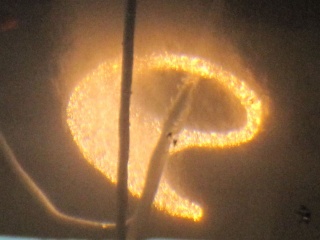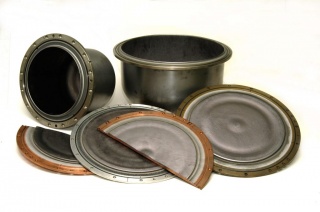Currently, composite coating technology will gradually replace single coating technology driven by the growing industrial demand. Micro-arc oxidation, also known as micro-plasma oxidation, can produce ceramic layers with good metallurgical properties on the surface of light metals Al, Mg, Ti and corresponding alloys by means of high voltage, high current and instantaneous high temperature. The main component of the ceramic layer is the oxide grown in situ in the matrix, and the electrolyte component is also involved in the micro-arc oxidation film layer. The electrical parameters (such as solution formulation, voltage and current, duty cycle, pulse frequency, etc.) in the micro-arc oxidation process have a great influence on the preparation and microstructure of the micro-arc oxidation film. The method is safe in process, simple in operation, environmentally friendly in solution, and has the advantages that the process which is unmatched by other processing technologies is simple, the film layer is uniform and compact, and the size of the workpiece is less restricted.
Related: Everything You Need to Know About Titanium Sputtering Target
Titanium alloy micro-arc oxidation film has the advantages of high hardness, high film-bonding strength, corrosion resistance and wear resistance, but the surface of the film is rough, loose and porous, and the friction coefficient is large, thus reducing the wear resistance of the film. It shortens the service life of the oxide film and is not conducive to the application of titanium alloy in the wear environment. At present, in order to improve the defect of titanium alloy micro-arc oxidation film, some research institutes of the Russian Academy of Sciences have carried out a lot of work, and the domestic concern about this issue has just started. This paper mainly introduces the related technology of composite processing based on micro-arc oxidation technology combined with sealing method, aluminum plating method, pulsed electron beam method, hydrothermal method and electrophoretic deposition method.
Micro-arc oxidation + sealing method
Due to the loose porous surface of the titanium alloy micro-arc oxidation film, some researchers have tried to fill the pores of the micro-arc oxide film by physical, chemical or electrochemical methods to achieve self-lubrication. Among them, polytetrafluoroethylene (PTFE) is an ideal self-lubricating material because of its good thermal stability and excellent chemical stability in various environments.
Micro-arc oxidation + hydrothermal method
In the hydrothermal method, a reaction medium is contained in a sealed container, and the container is continuously heated by a heat source to bring the inside of the container to a high temperature and a high pressure. Under the action of high temperature and high pressure, the insoluble or insoluble matter will dissolve and further recrystallize.
Microarc oxidation + pulsed electron beam
Pulsed electron beam (HCPEB) surface treatment technology uses high-speed electrons as a carrier to apply incident energy to the surface of the material in a very short time and causes a series of phenomena, including melting, condensation, vaporization, enhancement, diffusion, etc. Physical, chemical, and mechanical properties that are difficult to achieve with other heat treatments. The HCPEB method is used to prepare the composite modified layer on the titanium alloy micro-arc oxidation film, which belongs to the coating remelting category, that is, the micro-arc oxidation coating is prepared in advance, and then HCPEB is applied to the oxide film to perform electron beam remelting, thereby improving Uniform compactness of the film layer, degree of grain refinement, bond strength of the film base, wear resistance, corrosion resistance and the like.
Micro arc oxidation + aluminum plating
Related: Aluminum Titanium (Al/Ti) Sputtering Target
Compared with titanium alloys, aluminum alloys have many similar properties. For example, they are all valve metals, similar in application fields, low in density and high in specific strength. They are also widely used in metal fields. However, the properties of oxides of titanium alloys and aluminum alloys after micro-arc oxidation treatment vary greatly. The main composition of the oxide film formed by micro-arc oxidation of titanium alloy is TiO2 (rutile and anatase); the main products of micro-arc oxidation of aluminum alloy are Al2O3 (±-Al2O3 and ł-Al2O3). The hardness of Al2O3 is between 1200 and 1800 HV, which is significantly higher than the hardness of TiO2 (550~1050 HV). At the same time, the toughness of TiO2 is insufficient, and ł-Al2O3 has high structural and toughness. Therefore, in terms of hardness and wear resistance, the titanium alloy micro-arc oxidation film is not as good as the aluminum alloy micro-arc oxidation film.
For more information, please visit https://www.sputtertargets.net/.


